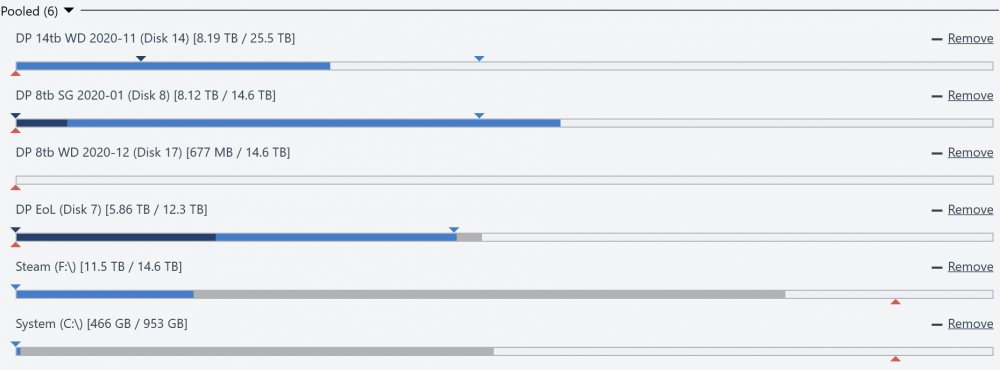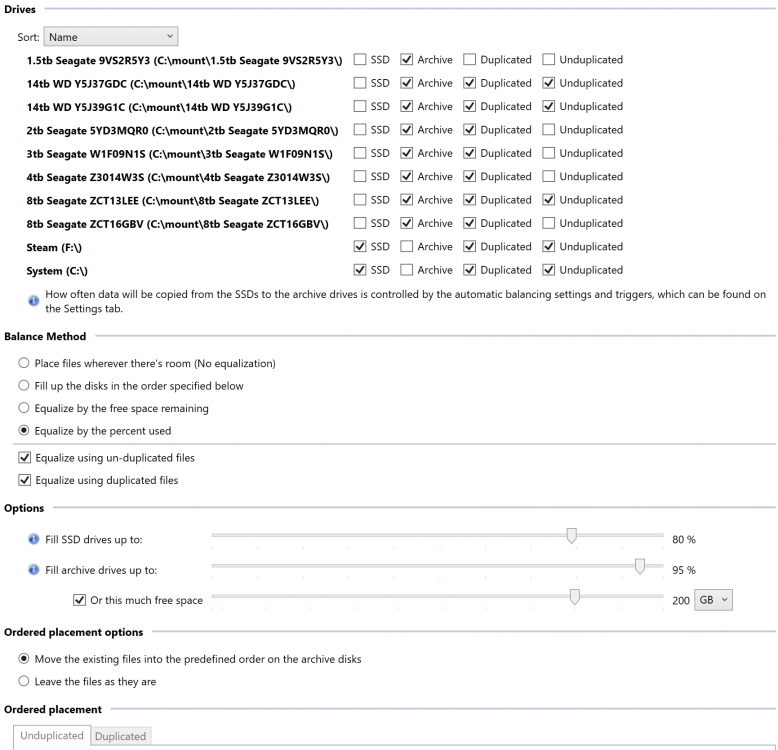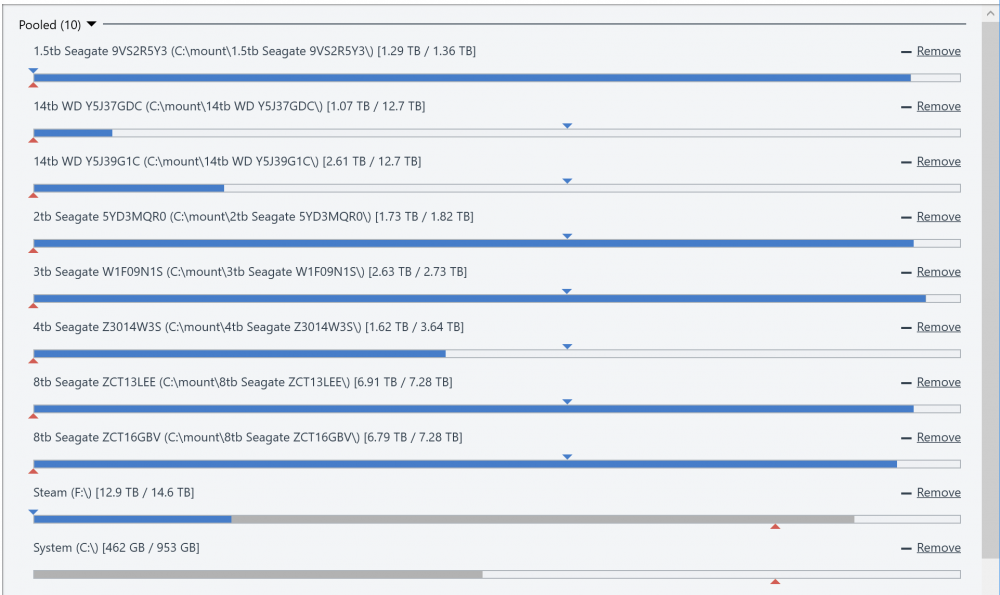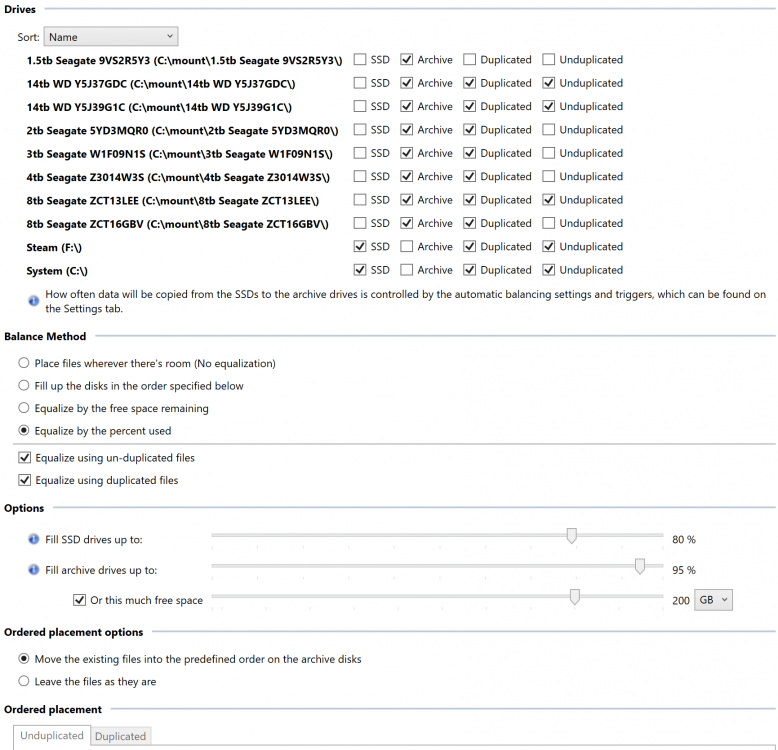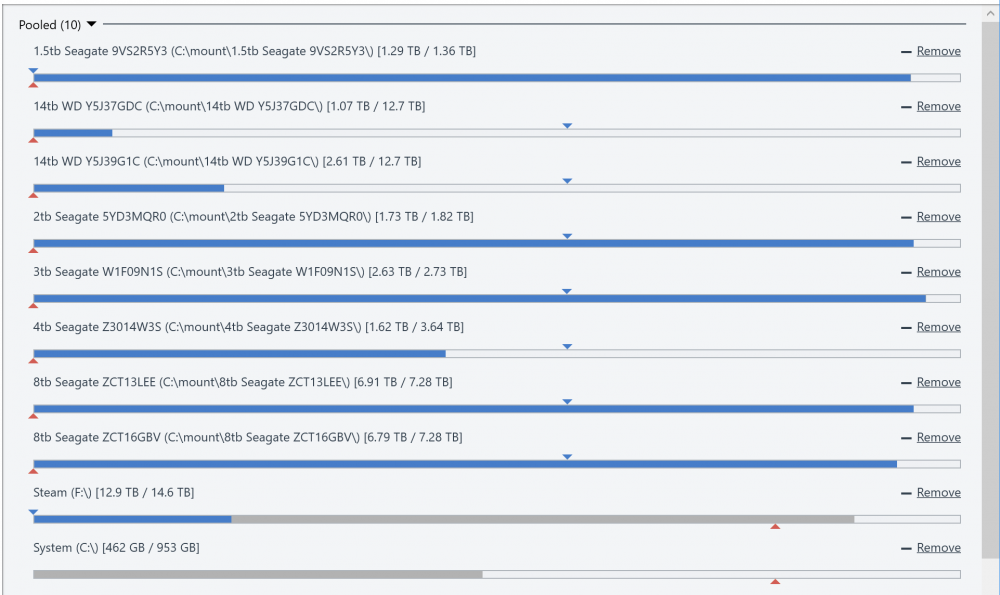-
Posts
20 -
Joined
-
Last visited
-
Days Won
4
methejuggler last won the day on December 24 2020
methejuggler had the most liked content!
Recent Profile Visitors
The recent visitors block is disabled and is not being shown to other users.
methejuggler's Achievements

Member (2/3)
11
Reputation
-

Font color issue with high contrast theme enabled
methejuggler replied to jerblack's question in General
I know this is an old post, but it's still an issue 4 years later. My monitor is 750 nit brightness and pure white windows are nearly blinding, so I run everything in dark mode. This works for 99% of applications these days, but the stablebit suite doesn't respect the dark mode setting. -
 Shane reacted to an answer to a question:
All In One Balancing Plugin
Shane reacted to an answer to a question:
All In One Balancing Plugin
-
I can't replicate this. The buttons appear to be working fine for me. Were there any extra steps that you took to make this happen? Edit: I found it. Only happens if no drives are set as "SSD". I released a new version to fix this.
-
Very strange, it didn't used to do that when I was testing, I wonder when that bug crept in. I'll fix it when I get home
-
Shane beat me to it, but yes you still need the Scanner plugin. I'd imagine that it'll stop giving that warning in a week or two when enough people have downloaded it and it has enough "sample size" to know it's ok.
-
 methejuggler reacted to an answer to a question:
All In One Balancing Plugin
methejuggler reacted to an answer to a question:
All In One Balancing Plugin
-
 Shane reacted to an answer to a question:
All In One Balancing Plugin
Shane reacted to an answer to a question:
All In One Balancing Plugin
-
 Shane reacted to an answer to a question:
All In One Balancing Plugin
Shane reacted to an answer to a question:
All In One Balancing Plugin
-
I don't know about that. The solution I went with is to add all suspect drives to a single pool (no duplication on that pool), then add that pool to my main pool, so it acts as a single drive - meaning only a single copy of the duplicated files will ever be placed on any suspect drive.
-
Example of my current setup with hierarchical pools: I have my end of life disks all in one pool, and each of the other pools has 2 drives each, purchased at the same time (I placed the purchase dates in the name to tell them apart easier). One of the 8tb seagate drives already has a pending sector on it, so I don't trust it (so no unduplicated content). Will probably RMA that soon. The 14tb drives are solid so far. The new Western Digital 8tb drives are still being scrubbed by the scanner, so I have it set not to place content on them yet until that finishes. Due to some strange glitch with DP while I was re-seeding and moving things to the new hierarchical pool setup, DP deleted a bunch of my duplicates, so it's in the process of re-duplicating, but you can see the balancer would be attempting to move all the unduplicated to the 14tb, nothing on the 8tb WD's, everything off the "SSDs", and then balance the remaining 3 evenly. Note that it takes the "unpooled other" files into account for the even percentage balancing.
-
Careful - DrivePool doesn't make any distinction between the two duplicates... they're both considered a "duplicate". So if it puts both duplicates of the same file on two different "bad" drives, and both of those drives go, you lose the file. This is the reason I was looking at drive groups (and ended up solving it with hierarchical pools).
-
These are the same options you'd find in the "Drive Usage Limiter" plugin. They limit what data can be placed on each drive. I'm not sure how useful they would be for SSD drives, but for archives they allow you to specify that a certain drive shouldn't have unduplicated data placed on it, for example. Having these checked for SSDs just specifies which type of content can be placed there initially. The content is still moved off onto the archive drives later. Exactly. It lets you specify suspect drives as only having duplicated data.
-
 gtaus reacted to an answer to a question:
Plugin Source
gtaus reacted to an answer to a question:
Plugin Source
-
 gtaus reacted to an answer to a question:
Plugin Source
gtaus reacted to an answer to a question:
Plugin Source
-
 gtaus reacted to an answer to a question:
Plugin Source
gtaus reacted to an answer to a question:
Plugin Source
-
 Shane reacted to a question:
All In One Balancing Plugin
Shane reacted to a question:
All In One Balancing Plugin
-
Take a look at the "Releases" link on the right side of the github page. I'll edit the post with a link to there too so people can find it easier.
-
methejuggler started following All In One Balancing Plugin
-
In an attempt to learn the plugin API, I created a plugin which replicates the functionality of many of the official plugins, but combined into a single plugin. The benefit of this is that you can use functionality from several plugins without them "fighting" each other. I'm releasing this open source for others to use or learn from here: https://github.com/cjmanca/AllInOne Or you can download a precompiled version at: https://github.com/cjmanca/AllInOne/releases Here's an example of the settings panel. Notice the 1.5 tb drive is set to not contain duplicated or unduplicated: Balance result with those settings. Again note the 1.5tb is scheduled to move everything off the disk due to the settings above.
-
Ok, I put it up on GitHub: https://github.com/cjmanca/AllInOne Feel free to give it a try if you'd like. I also created a new forum post about it so people can find it easier:
-
 Shane reacted to an answer to a question:
Plugin Source
Shane reacted to an answer to a question:
Plugin Source
-
I actually just thought of a solution for this which doesn't require a plugin! I could make separate pools for each of the drives I bought at the same time and NOT set duplication on these, and then make one big pool that only consists of those smaller pools and only set duplication on the one big pool. Then it would duplicate between pools, and ensure that the duplicates are on different groups of drives. I'll probably do the same with any disks nearing their end of life. Place all near EoL disks in one pool to make sure it doesn't duplicate files on multiple near EoL disks.
-
Hybrid SSDs are nice for normal use, but in mixed-mode operating environments they get overwhelmed pretty quickly and start thrashing (ie. NAS with several users). There's also the problem of things like DrivePool mixing all your content up across the different drives, so the drive replaces your cached documents with a movie you decide to watch, and then the documents are slow again, even though you weren't going to watch the movie more than once. If there was a way to specify to only cache often written/edited files for increased speed, then maybe? But I think that would still run into issues with the balancer moving files between drives. The Hybrid drive wouldn't know the difference between that and legitimately newly written files.
-
Of course, I have Backblaze for cloud backup too, but re-downloading 10+ TB of data that could have been protected better locally isn't ideal. I'm glad to hear you've had good luck so far, but don't fool yourself - multiple drive failure happens. Keep in mind that drives fail more when they're used more. The most common situations of multiple drive failure is that one drive fails, and you need to restore those files from your redundancies. During the restore process, another drive fails due to the increased use. The most simultaneous failures I've heard of is 4 (not to me)... but that was in a larger raid. There's a reason for the parity drive count increasing every ~5 drives in parity based raids. So far, I've been quite lucky. I've never permanently lost any files due to a drive failure - but I don't want that to start due to lack of diligence on my part either, so if I can find ways to make my storage solution more reliable I will. In fact - one of the main reasons I went with DrivePool is that it seems more fault tolerant. Duplicates are spread between multiple drives (rather than mirroring, which relies entirely on one single other drive), so if you do lose two drives, you may lose some files, but not a full drive's worth. (Plus the lack of striping similarly makes sure that you don't lose the whole array if you can't restore.) I realize I don't need to explain any of this to someone who uses it, but just highlighting the reasons I found DP attractive in the first place - separating the duplicates amount multiple drives to reduce the chance of losses on failures. If that can be improved to further reduce those chances...
-
 gtaus reacted to an answer to a question:
Plugin Source
gtaus reacted to an answer to a question:
Plugin Source
-
Settings from my plugin. Notice the 1.5 tb is set to not contain duplicated or unduplicated: Balance with those settings. Again note the 1.5tb is scheduled to move everything off the disk due to the settings above. It properly handles mixed content (duplicated, unduplicated and "unpooled other"), and equalizes accounting for all 3.


